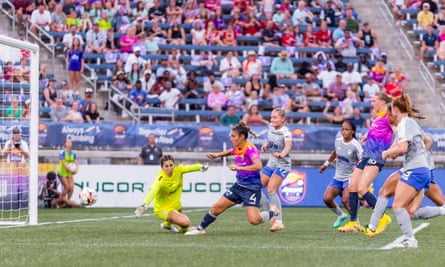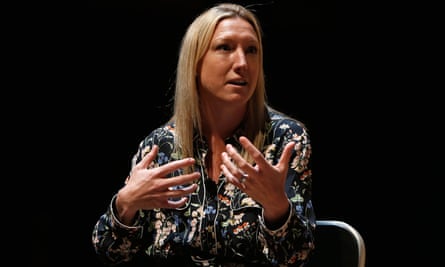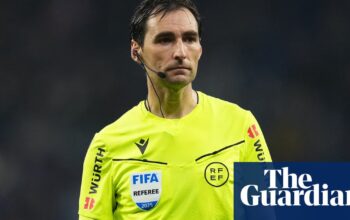Two years ago, Amanda Vandervort was unveiled as the first president of a new fully professional women’s league, the USL Super League, in the United States. For a country with a thriving professional league, the NWSL, there were many questions. How? Why? Where? Would it take off?
Many of those questions were answered on the opening weekend just under seven weeks ago. A sellout crowd of more than 10,000 at the American Legion Memorial Stadium watched Carolina Ascent beat DC Power 1-0. Two more sellout crowds watched Spokane Zephyr’s 1-1 draw with Fort Lauderdale United and Tampa Bay Sun’s draw with Dallas Trinity. The crowds have naturally dipped a little but have still averaged 2,929 for the 12 of 14 subsequent fixtures that have had attendances announced – a total of 35,152 fans.
The scorer of the eight-team Super League’s first goal was a fitting one, going a long way towards answering the “why” question. Thirty-year-old defender Vicky Bruce is a product of the impressive college system but after playing for the North Carolina Tar Heels and Davidson Wildcats college teams, she was not drafted by an NWSL team.
Bruce was lucky that with a father born in England she had a UK passport and that meant her desire for a professional career was not over. She played in Scotland, Iceland, Cyprus, Sweden, Denmark, Germany, England and Australia. Now, she is home, playing professionally in front of family and friends week-in, week-out for the first time after becoming Carolina Ascent’s first signing.
This is who the league serves. There is a huge talent pool developed by the college system but only 14 professional NWSL teams. The USL’s amateur W-League, which folded in 2015, was relaunched as the USL W League in 2022 as a pre-professional women’s league with 80 teams in 10 divisions. A professional league above them was a logical next step.
“When you’re in the USL ecosystem it’s an elite development pathway that leads to professional women’s soccer and the standards, the alignment, is all clear and driven collectively and consistently from us at the league,” says Vandervort from the USL office in Tampa, Florida. She sees Tampa Bay Sun shirts while out and about, and regards that as testament to the connection the side has built with the community.
Many consider the Super League a competitor to the NWSL, particularly with it aligning with the calendars of top European leagues by beginning in August and not having a draft system (which the NWSL has recently ditched).

“There’s only 14 NWSL teams,” Vandervort says. “There’s over 100 men’s professional teams in the United States … that alone tells a story that women have historically not been given the opportunities men have. But there are now eight more women’s professional teams. The Super League fills a gap in a limited way today, but we hope to continue to fill it as we build the league.”
The Super League operates in different cities from the NWSL and the demand has been clear. “We packed their stadiums on our first weekend,” says Vandervort. “That’s an indication of the fan interest. The stadiums are not always going to be packed like that, but it’s a demonstration of where we’re at and how interested and excited people are about professional women’s soccer in their home towns.”
Vandervort, a former player at the University of Wyoming, then head coach of New York University’s women’s soccer programme, president of United Soccer Coaches (the largest coaches’ association in the world), vice-president of customer relations and social media and then fan engagement for men’s Major League Soccer, and chief women’s football officer for the players’ union Fifpro, is hands on. She cares. And she has tried to connect with as many players in the league as possible.
“A lot of them have come back to America to play in their home towns from playing abroad,” she says. “Some were just top collegiate talent who it just didn’t work out for, for one reason or another. Some are players who got injured in the last year of college or at the end of a contract and just didn’t pick up a contract after that. A lot of those have come back from injury and have got a chip on their shoulder and they want to prove themselves.
after newsletter promotion
“There’s just a real mood of thankfulness among the athletes that this opportunity exists. They all say thank you, which is amazing to hear, but also there needs to be more opportunities.”

There have been many attempts to launch professional women’s leagues in the US, including the Women’s United Soccer Association and Women’s Professional Soccer, both of which folded. The NWSL has survived and thrived, but what will make the Super League successful?
“One of the main differences between the leagues of the past in the United States and our league today is infrastructure. In the USL office we have over 100 employees and we’re growing and expanding quickly. The USL is already running two professional men’s leagues and multiple amateur leagues. We’re good at leagues and we’re good at running them. Long term that’s going to benefit us.”
The buy-in and commitment from owners has been significant too. There have been stadiums built for a number of teams and millions of dollars invested. Vandervort says of investors and brands: “They see the opportunity, see the vision, recognise that this is a viable business product and want to get in early doors so that they can be part of the long-term sustainability of the league.”
Another important aspect has been prioritising building club brands. “We are focused on how we elevate all the clubs and tell local stories and the stories of the players and fans who are in those cities and what’s important to them,” Vandervort says. “We want to create multiple brands that are reflective of those towns and then tell that story nationally.”
Source: theguardian.com


